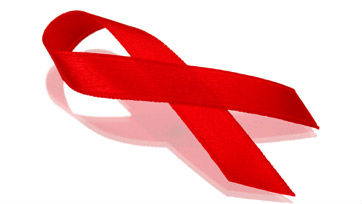The End of AIDS?: An Introduction

Optimism about a cure for HIV/AIDS is the highest it’s been since David Ho pioneered the Highly Active Antiretroviral Treatment (HAART) drug cocktail in 1996. Just last week, the powerful antiretroviral drug Truvada was shown to be effective not only as treatment but also as prophylaxis: among participants who used the drug daily, there was a 90 percent reduction in infection, roughly comparable to using a condom.
In light of this exciting news, Big Think spoke with some of the world’s leading AIDS researchers, physicians, and activists about the state of the epidemic and the ongoing search for a cure. This three-day series will highlight the cutting-edge scientific research, examine the dangers of stigma, and investigate the political and economic challenges of battling HIV/AIDS globally and domestically.
During the first day of the series, we take a look at the most promising avenues of HIV/AIDS research. Some scientists still believe it is possible to eradicate every last particle of virus from the body. But many now imagine that a cure will be a so-called “functional cure,” which will lower the virus to undetectable levels either by boosting the immune system or through gene therapy. This is what seems to have occurred in the body of the “Berlin patient,” an HIV-positive man who received genetically-mutated bone marrow transplants to treat his leukemia. Most scientists agree that he is the first man to be cured of HIV. This and other recent successes build upon previous decades of tremendous scientific research, including David Ho’s groundbreaking discovery of HAART. Ho explains to Big Think how this drug cocktail works and tells us about the “eureka moment” that led to this discovery.
The second day of the series addresses the devastating stigma attached to the disease, featuring discussions with two of the most prominent public figures living with HIV: Andrew Sullivan, the Atlantic’s political commentator and blogger, and Regan Hofmann, the editor-in-chief of POZ magazine. Dr. Paul Bellman, a major voice in HIV/AIDS clinical care, also explains that current antiretroviral treatment is so effective that it renders people virtually unable to transmit the disease, information which he hopes will help combat the stigma.
The final day of the series examines the policy and economics of HIV/AIDS treatment and prevention domestically and globally. Seth Berkley, founder of the International AIDS Vaccine Initiative, explains the economics of creating an AIDS vaccine and discusses strategies to incentivize innovation. But given the efficacy of modern antiretroviral treatment, some argue that it may be possible to halt the AIDS epidemic in Africa through aggressive and widespread treatment, rather than searching for a “silver bullet” cure. And though over 80 percent of those living with HIV are in Africa, the epidemic is on the rise in the United States as well. But the Obama Administration has made a real commitment to combating it, says Marjorie Hill, CEO of Gay Men’s Health Crisis, the world’s oldest AIDS non-profit. For creating the first National AIDS Strategy in U.S. history, Obama deserves an A minus, she say. The media, however, does not rate so well. “If I were going to give the media at large a grade on HIV coverage, it would be a D minus,” she says. “And the only reason why is isn’t an ‘F’ is because of World Aids Day.”
This series is our attempt to bring public awareness to this ongoing epidemic; it is still a major public health crisis, but we are closer to a cure than ever before.





